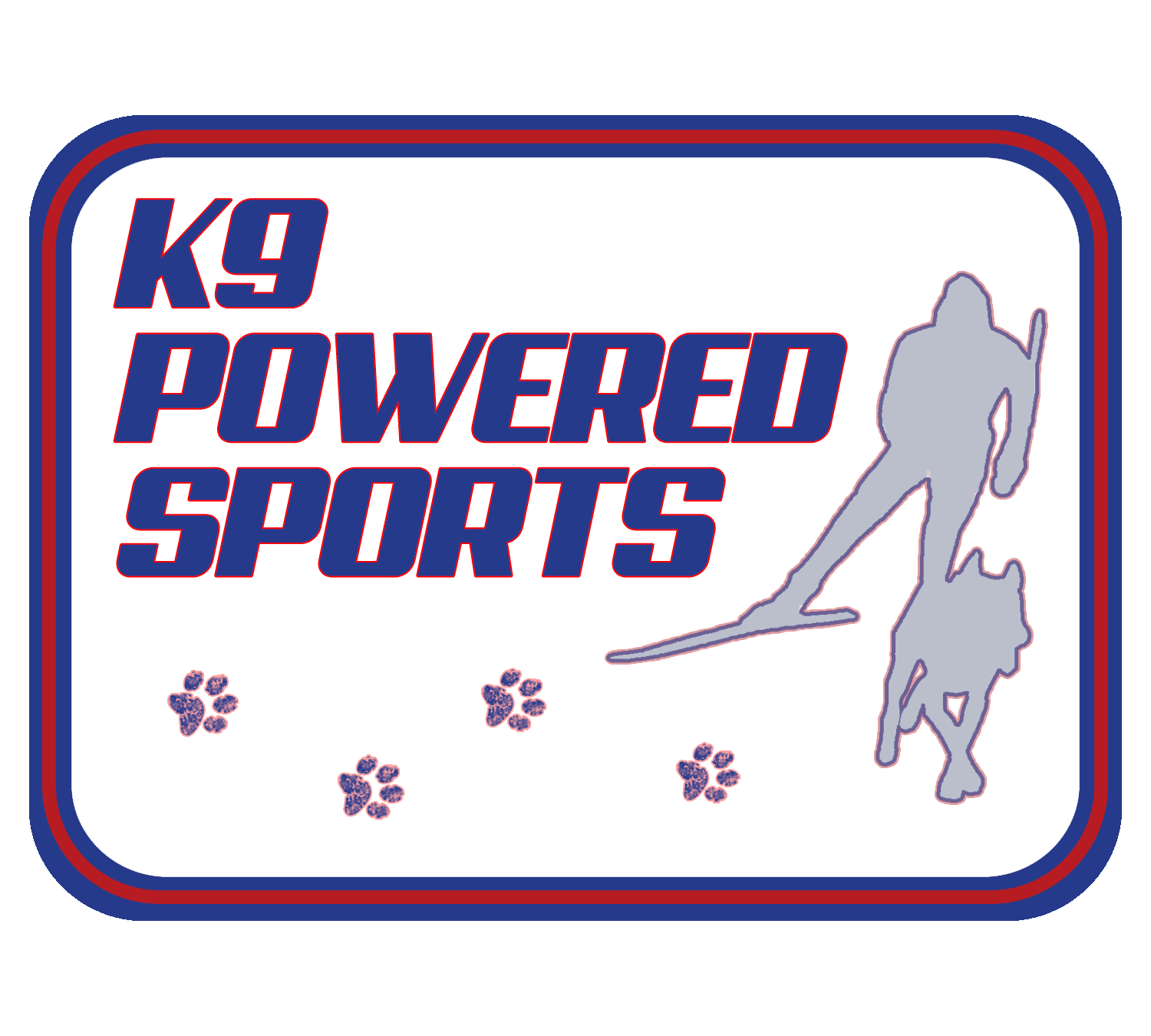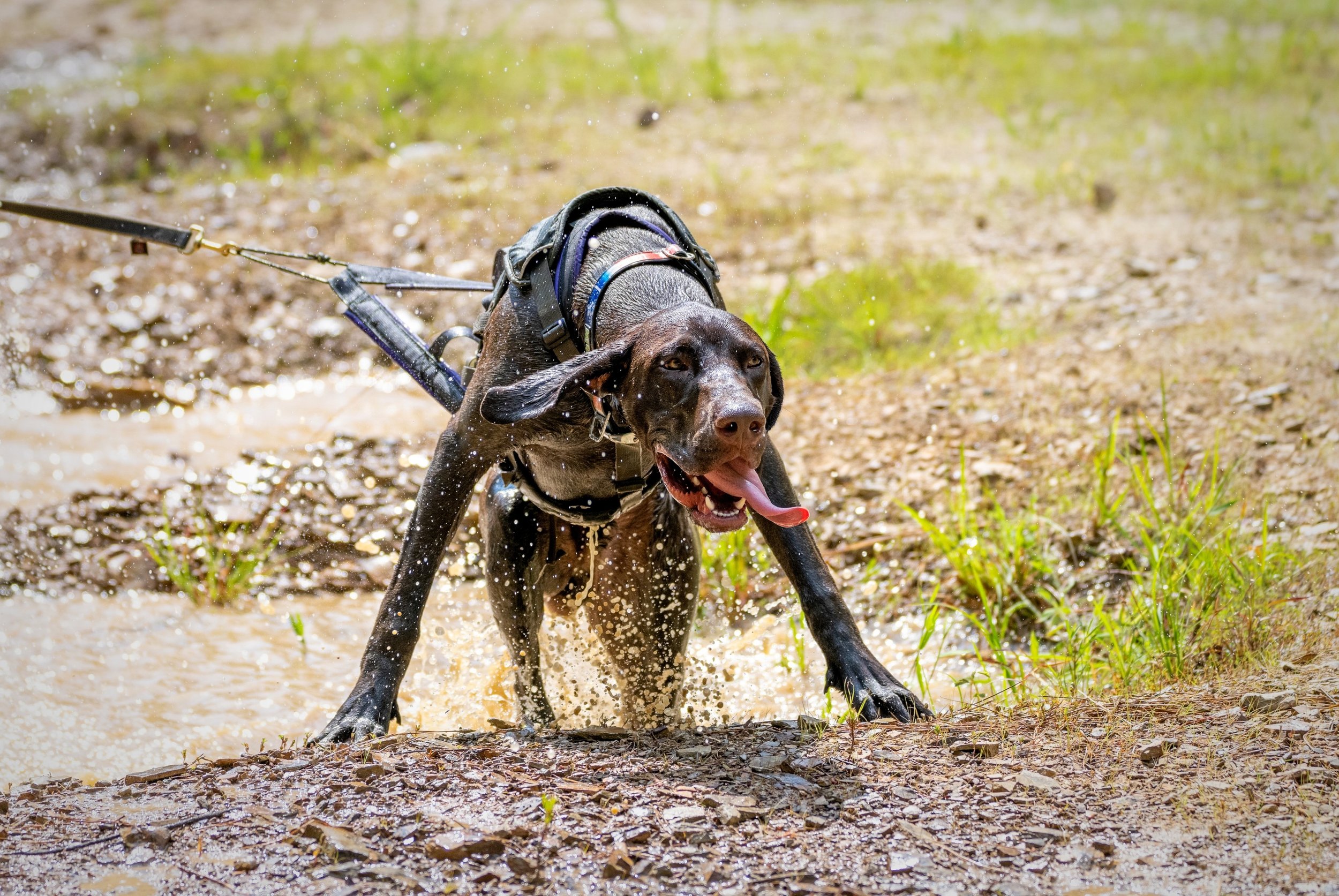Caring for the Canine Athlete
Let’s face it, the most important aspect of this sport is that our dogs LOVE IT! That’s why you are here-how do I ensure my dog will have the best success in this sport-can my dog even do this? How can I ensure she will stay healthy? How and when do I start my puppy? What’s up with Musher’s Secret?
-
The beauty of this sport is that ANY dog can do this. HOWEVER, it is important to know that not all dogs will or can pull and not all of them will pull with the same vigor. If done properly skijor, bikejor AND canicross can all be completed with tiny dogs, huge dogs, 3 legged dogs, blind dogs, dogs with arthritis and yes… I have seen a cat skijor!!! The key is to always keep sessions short and don’t get frustrated if YOU are the teammate that is doing all the work. Your goal with ANY dog is just to get out and have fun and teach them the rules of the game. If you notice a sudden change in the ability or desire of your teammate that is a BIG sign of a health condition. Either it is mental and we have pushed too far, or more likely it is physical. Having your teammate checked out by a sports medicine inclined Veterinarian or one certified in Chiropractic (VSMT) or Physical Therapy (CCRT or CCRP) will ensure any small issues can be helped. Keeping the distances short for special needs dogs and keeping the intensity down will also ensure you are NOT causing more harm than good with your exercise regime.
One rule of thumb that I use is this. If you come back from exercise MORE sore, or have to suffer the consequences of it, then it is best to either shorten the intensity or duration of the activity or to consider that this activity is just not for your dog.
Dogs (and humans) can remain VERY competitive despite health concerns and there are lots of ways to help these athletes through cross training and certified supplements.
Remember our ultimate goal is to just get outside and enjoy being active TOGETHER!
-
Our canine teammates are true athletes and deserve to be treated that way! There are a few key principles to health.
Ideal weight is the first. We know fat in excess causes inflammation and that leads to all sorts of devastating consequences. An ideal weight athlete will have easily visible ribs if short haired. A good rule of thumb is, if you make a fist and palpate over your knuckles—that is what your dog’s ribs should feel like. Some dogs you will see their spine and some you won’t. A great resource is Purina Body Condition Score
Nutritionally speaking people are VERY passionate about diets. We have studies that PROVE dogs need 24% minimum protein to prevent muscle injury. But the rest is up to you in the exact food to feed—kibble, homecooked or raw, the most important thing is balance. Thankfully we have many amazing foods available in all those forms at the commercial level.
There are also lots of nuances on when to feed for performance, but that topic is reserved for the more advanced musher. A good rule of thumb is NOT to feed within 2-4 hours before a hard work-out and to allow your dog to cool off before feeding them after work-outs. We definitely need to provide post-recovery chews as well as a post-recovery meal like we do with human athletes for best muscle recovery. Annamaet Recovery Chews
Hydration is KEY!! Ensure your dog is well hydrated to help prevent over-heating. This can be aided by providing baited water 2 hours prior to a workout. A general rule of thumb is to use a small amount of something like canned chicken mixed with 1 cup of water for a 50 lb dog. This hydration requirement is different for all dogs based on heat, diet and animal factors.
KNOW THE SIGNS OF HEAT STRESS. This is a great website link that will help you determine if you are pushing things too far with temperature. Dogs are more prone to over-heating if it happens, so be cautious on hot and especially HUMID days.
-
It is NEVER too early to start foundation work for ANY training for a performance canine. Depending on what your goals are, there are so many things that your new puppy needs to learn to be a healthy and happy canine citizen.
Early socialization has to be thoughtful due to a puppy’s vulnerable immune system, but a puppy’s most critical socialization is from 8-16 weeks old. Also puppies go through fear stages which have to be taken into account for best socialization efforts. However if you expect your new puppy to be good in the midst of hundreds of dogs, this safe socialization is a must. Puppy classes are perfect ways to accomplish all aspects of this dilemma.
The other big debate is how far can my puppy go and when? This simple question is shrouded in confusion amongst professionals. We truly have NO studies that prove early exercise leads to joint problems. It is surmised that high impact exercise in young human children leads to increased injury and joint disease for adults, and so we use these studies and extrapolate to canines. However canines are NOT human and are in fact generally much more nimble!!
We again need to rely on our common sense to figure out what is best for YOUR puppy. I wouldn’t train a Wolfhound puppy to pull in the same way I would train a husky that comes from endurance kennel genetics. If a dog is built with ideal confirmation (you are so lucky if that is the case!!) you can generally do quite a bit with those puppies. If you are noticing any lameness or reluctance that wasn’t there, I would take a step back and reduce the intensity or duration of that exercise.
Some good generalized albeit conservative rules of thumb are:
No activity that the puppy does constantly (like running) for more than 20 minutes until they are 1 year of age. Again, a husky sized canine running a 13 minute mile can do way more than 20 minutes safely, but a 6 month old Great Dane trying to race a body slamming 2 year old Greyster may hurt herself trying to keep up!
Avoid high impact repetitive jumps or aggressive play until they are a year.
Growth plates are indeed closed at about 1 year of age for most dogs. There are reports of giant breed dogs with open growth plates until 20 months of age, but again, we have NO studies that support damage to growth plates from exercise.
Remember these are conservative recommendations. How that looks for me personally—I race sprint bikejor and skijor with Greysters—is this:
We start them in harness at a young age developing the love to pull. These sessions are in canicross (the puppy is hooked to the human.) We reward pulling with praise and speed. The session is usually about 5 minutes at most or about 1/8th of a mile. Then they are off leash for the rest of the walk. As the puppy ages we increase the distance and the speed based on how that puppy is doing. If I have a slower adult I may hook him up for a good experience. At 1 year of age the puppies may have been able to work up to 1 or 2 mile races and maybe a 3-4 mile training run— again based on their own abilities. Speed runs are definitely high impact activities, so watch these closely for any sign of fatigue.
-
It is no “secret” that foot health is a hot topic for competitive canines. Feet should be evaluated after every run. Most foot problems are solved by slow conditioning to the conditions. We notice issues with dogs that live in the house and then one day do a marathon hike on the hot pavement—these same issues do not occur with dogs that walk on a regular basis in those conditions. The same for snow-dog’s feet do not frostbite unless they have an underlying medical issue or if they are improperly conditioned to the elements. Booties are the best solution to the elements.
Dog booties are very easy to make and can also be purchased. Some snow conditions require booties-very cold snow can be razor sharp and very punchy or icey snow can cut up feet as well. Booties are the solution to this problem. When walking in the city, booties can help protect your dog’s feet from the salt. Also sometimes the snow conditions are perfect to cause snowballs to form on hairy dog feet—again booties are your best defense.
Watch for fissures between the paw pads. These again can be best protected with booties and are common in dogs that have sweaty feet or sensitive skin. Booties are the best prevention of fissures if your dog is prone to them.
Products like musher’s secret can be used to soften cracked paw pads. This is not very common, but can occasionally cause lameness. Sometimes we will use the musher’s secret to help heal fissures or help prevent them along with booties.
If your dog continues to have foot or nail problems this can be a sign of a nutritional deficiency or even an underlying medical condition. So don’t be afraid to seek a Veterinarian’s guidance if needed.

